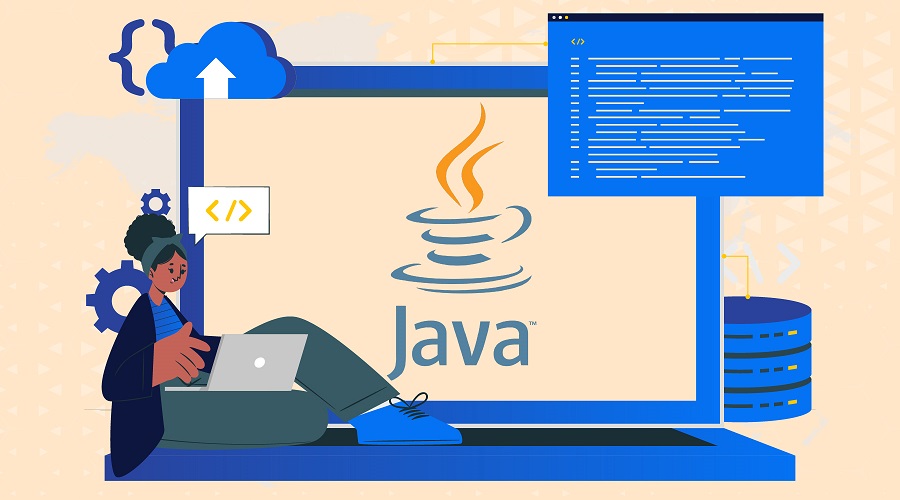Java Application Development Process: A Step-By-Step Guide

Java is a powerful backbone for producing all types of software in the digital age. Java application development process’s dependability and adaptability make it a top choice for developers worldwide. This applies to mobile apps, web platforms, and sophisticated systems alike.
Consider Java to be your toolset, assisting you in transforming ideas into practical apps. But this voyage requires a guide, a clear path through the coding landscape. This guide is a road map to aid you from start to end.
We’ll start by giving you its definition and importance. Furthermore, we will show you how the entire Java application development process works. We will then move on to some tips and resources. So let’s dive in.
What is the application development process?
—————————————
The Java application development process is pretty systematic. The Java programming language is used to develop, construct, and deploy programs. It entails several processes and procedures. The work of Java developers comes here. They transform a notion or idea into a functional and usable software product. Moreover, the Java application development process is crucial for several reasons:
● Structured approach
It provides a well-structured framework to work inside. As a result, the development process is more organized, efficient, and manageable.
● Quality assurance
Following a defined process helps in identifying and addressing issues. Consequently, this leads to better quality and reliability in the final application early in development.
● Consistency
It promotes consistent coding practices, style, and architecture. As a result, it makes the codebase easier to understand and maintain.
● Collaboration
A well-defined process allows multiple developers to work at a time. This is on different parts of the application while upholding coherence and cohesion.
● Efficiency
The allocation of resources and the development schedule are streamlined in the Java application development process. This is accomplished by segmenting the development into phases like design, coding, testing, and deployment.
Now, let’s proceed and walk through the Java app development procedure step by step to comprehend it fully. Hire dedicated Java developers right away, if you are someone looking out for them.
How to implement the Java application development process?
—————————————
The stages involved in creating Java applications are organized in a specific order. This is to produce useful software. Hence, here is a proper process flow you can leverage while developing Java apps.
● Requirement analysis
The project’s goals must be understood during this early phase. User demands and functional requirements are also included. Thus, the development process is built on the information provided.
● System design
The architecture and design of the application are planned during this stage. Data flow, modules, and components are specified. So, a blueprint for the application’s structure is created.
● Implementation
Actual coding occurs, or the work of Java developers starts when developers write Java code based on the design. As a result, they implement the application’s logic and functionality.
● Unit testing
Each component of the application is tested in isolation. This is to ensure they function as intended. This phase catches bugs and verifies the correctness of individual units of code.
● Integration testing
This phase identifies any issues that might arise from their interactions. Different components/modules are integrated and tested together.
● System testing
The entire application is tested in its entirety. This step confirms that the entire application satisfies all functional requirements. Furthermore, it performs as promised.
● User acceptance testing (UAT)
Users test the program to ensure that it meets their needs and expectations. Moreover, feedback is gathered and incorporated.
● Deployment
The app is now prepared for deployment. It entails setting up crucial infrastructures like servers and databases. For the software to work properly, they are essential.
● Maintenance and updates
After the app goes live, maintenance work starts. This entails improving the app and fixing bugs. It needs to remain current and functional.
● Documentation
Documentation is produced at every stage of the procedure. So this documentation serves as a technical reference for developers as well as a user manual.
Now, let’s look at how to make the Java application development process more effective.
What are a few tips to make Java application development more effective?
—————————————
We have provided a few tips to assist you in making your Java application development process better. Here are some great ones:
● Clear requirements
Make sure you comprehend the project requirements completely. This ought to happen before beginning development. Exact requirements prevent scope creep and effectively direct your development efforts.
● Effective design
Spend time creating the architecture and data models for your application. A well-designed structure improves scalability and makes the development process go more smoothly.
● Modular coding
Break down your code into smaller, manageable modules. This promotes code reusability, maintainability, and more accessible debugging.
● Follow best practices
Adhere to coding standards and best practices. A consistent coding style makes your code more readable and maintainable.
● Version control
Track changes using version control systems such as Git. This is for teamwork and the ability to roll back to earlier versions if necessary.
● Unit testing
Implement thorough unit tests for each module to identify problems early and guarantee that each component performs as planned.
● Continuous integration
Implement automated evaluation and deployment processes. This can be done by establishing a CI/CD framework. This approach accelerates the development pace while upholding code excellence.
We’ll now look at some helpful resources for Java application development.
What are the Java resources that can help in Java app development?
—————————————
Many resources are available that can help you on your path to creating Java applications. Here are a few of the resources to check out:
● Oracle Java documentation
A trove of information resides within Oracle’s sanctioned documents. This content encompasses Java’s libraries, APIs, and capabilities. It is invaluable for grasping Java’s fundamental principles and its potential applications.
● Java tutorials (Oracle)
Oracle offers numerous tutorials covering different Java topics. The content spans from fundamental ideas to basic syntax. This includes networking, GUI design, and multithreading aspects.
● Java code examples
Websites like GitHub, Stack Overflow, and countless online communities have code samples available. This applies to numerous Java scenarios. As a result, using these examples will teach you how to handle actual code issues.
● Java IDEs (Integrated Development Environments)
Several tools are provided by IDEs like Eclipse, IntelliJ IDEA, and NetBeans to write, debug, and test Java applications efficiently. Furthermore, they also provide code autocompletion and debugging tools.
● Java frameworks
Spring and JavaFX frameworks give ready-made solutions. This is for everyday development work. Furthermore, it covers web application development as well as database interactions.
● Java books
Books like “Effective Java” by Joshua Bloch and “Head First Java” by Kathy Sierra and Bert Bates offer in-depth insights. This is into Java best practices and also learning the language from scratch.
● Online learning platforms
Websites like Udemy, Coursera, and Pluralsight offer Java courses. They also cover various topics, from beginner to advanced levels. So make sure that you make use of these websites.
Conclusion
Java is a beacon of creativity and innovation in the world of technology. The Java application development process entails meticulous planning, development, testing, and constant learning. You can realize your digital visions with the correct tools, resources, and persistence. This holds true regardless of the application’s format, such as a web platform, a mobile app, or a complex system.
We hope this article has helped you comprehend the entire procedure and how to implement it properly. You can also engage dedicated Java developers to achieve expert-level solutions in a single step. So, what are you holding out for? Start your journey now!
FAQ
1. What is Java application development?
Java application development involves creating software applications using the Java programming language. Java is known for its platform independence, making it suitable for a wide range of applications, from desktop to web and mobile.
2. What tools do I need for Java development?
You’ll need a Java Development Kit (JDK), an Integrated Development Environment (IDE) like Eclipse, IntelliJ IDEA, or NetBeans, and a text editor. The JDK includes the Java compiler, runtime, and other tools necessary for development.
3. What is the difference between JDK and JRE?
JDK (Java Development Kit) contains tools and libraries for Java development, including the compiler. JRE (Java Runtime Environment) is used to run Java applications; it includes the Java Virtual Machine (JVM) and runtime libraries.
4. What is Java Virtual Machine (JVM)?
JVM is a crucial component of the Java platform that executes compiled Java code. It allows Java applications to run on different platforms without modification.




